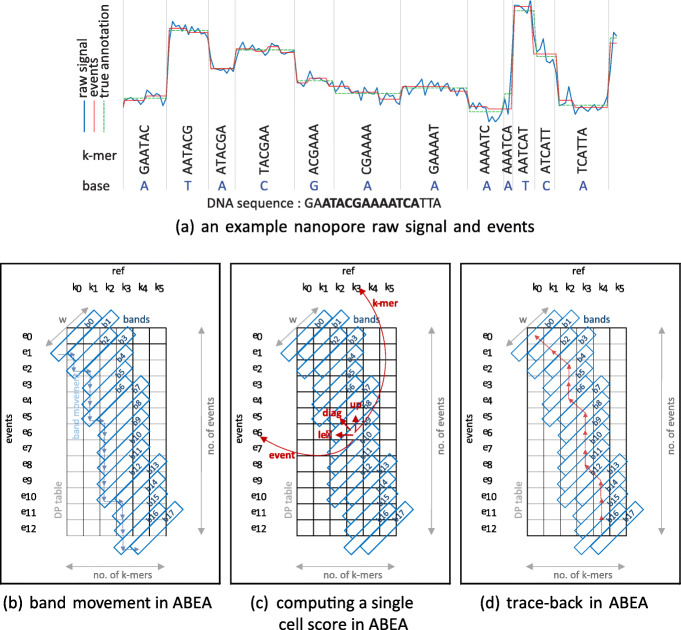Fig. 2.
Nanopore raw signal, events and ABEA algorithm. In aevents are the result of the event detection step (time series segmentation of the raw signal based on abrupt changes — detailed in Supplementary Materials) and true annotation is the expected output of ABEA. In b, c and d, vertical axis represents the events and horizontal axis represents the ref k-mers (k-mers within the base-called read). The dynamic programming table (DP table) is for 13 events, indexed from e0−e12 vertically, and the ref k-mers, indexed from k0−k5 horizontally. For computational and memory efficiency, only the diagonal bands (marked using blue rectangles) with a band width of W (typically W=100 for nanopore signals) are computed. The bands are computed along the diagonal from top-left (b0) to bottom-right (b17). Each cell score is computed in function of five factors: scores from the three neighbouring cells (up, left and diagonal); the corresponding ref k-mer; and, the event (shown for the cell e6, k3 via red arrows in c). Observe that all the cells in the nth band can be computed in parallel as long as the n−1th and n−2th bands are computed beforehand. To contain the optimal alignment, the band adapts by moving down or to the right as shown using blue arrows. The adaptive band movement is determined by the Suzuki-Kasahara heuristic rule [9]

